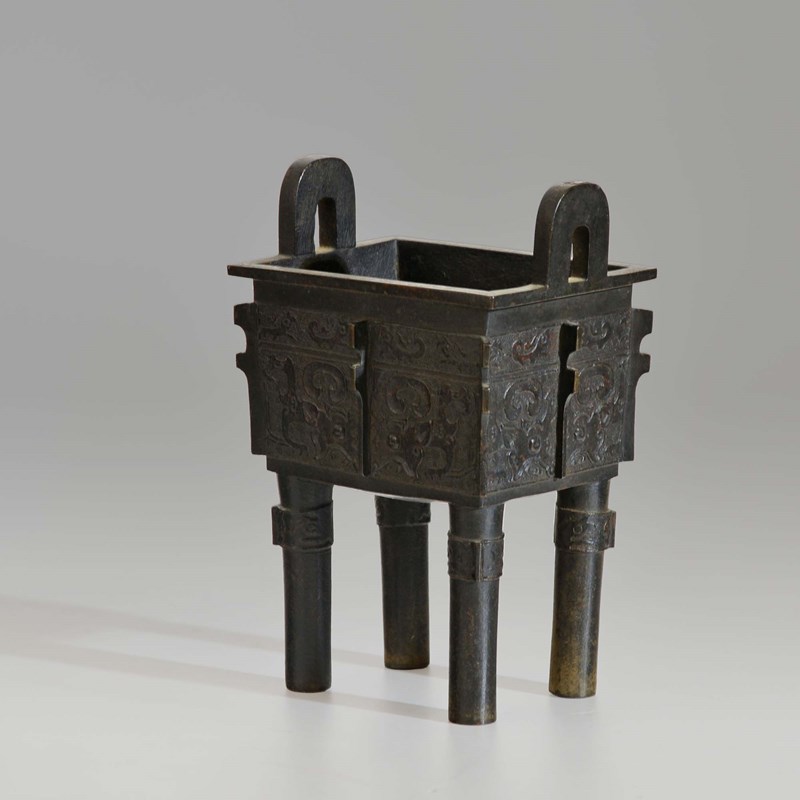Decorative Collective - www.decorativecollective.com
Sellers's Details
BAGGOTT & CO
Tel: +44 (0)1556 509270
Email: [email protected]
https://www.decorativecollective.com/dealers/baggott-coItem Details
A ding of rectangular form and upon four cylindrical legs. A loop handle to each end and flanges to each corner and side. The ding is cast in relief on all four sides with a taotie mask, with a leiwen ground, the thunder motif depicted by juxtaposed square spirals. Above each taotie mask there are depicted kui dragons. A collar to the upper section of each leg further decorated with kui and leiwen, the collar with a flange to the outside edge. The bronze of dark colour with chocolate brown highlights.
Most ding vessels are round in form and stand on three legs. This four-legged variant with a rectangular body, known as a fang ding (square ding), is thought to have been for the exclusive use of royalty. The square form is thought to derive from a wooden prototype.
The ding was the most important cooking vessel in the Shang, used for offering food to ancestors and for cooking. The Fangding is the most highly regarded of all Chinese bronze vessels.
The taotie mask design on the centre is the most prevalent decoration found on Shang bronzes. Taotie was a mythical animal that had a head but no body. No matter how much it ate, it could never get enough. A taotie mask on a food vessel might be a caution against overeating. Above the taotie is a register of with two pairs of confronting kui dragons.
Chinese, 17th-18th century.
- Period: 17th-18th century
-
- Price: £3,950.00
- €4,505 Euro
- $5,186 US Dollar
- Location: Scotland
-
- Dimensions: H: 26cm (10.24in)
- W: 17cm (6.69in)
- D: 13cm (5.12in)
